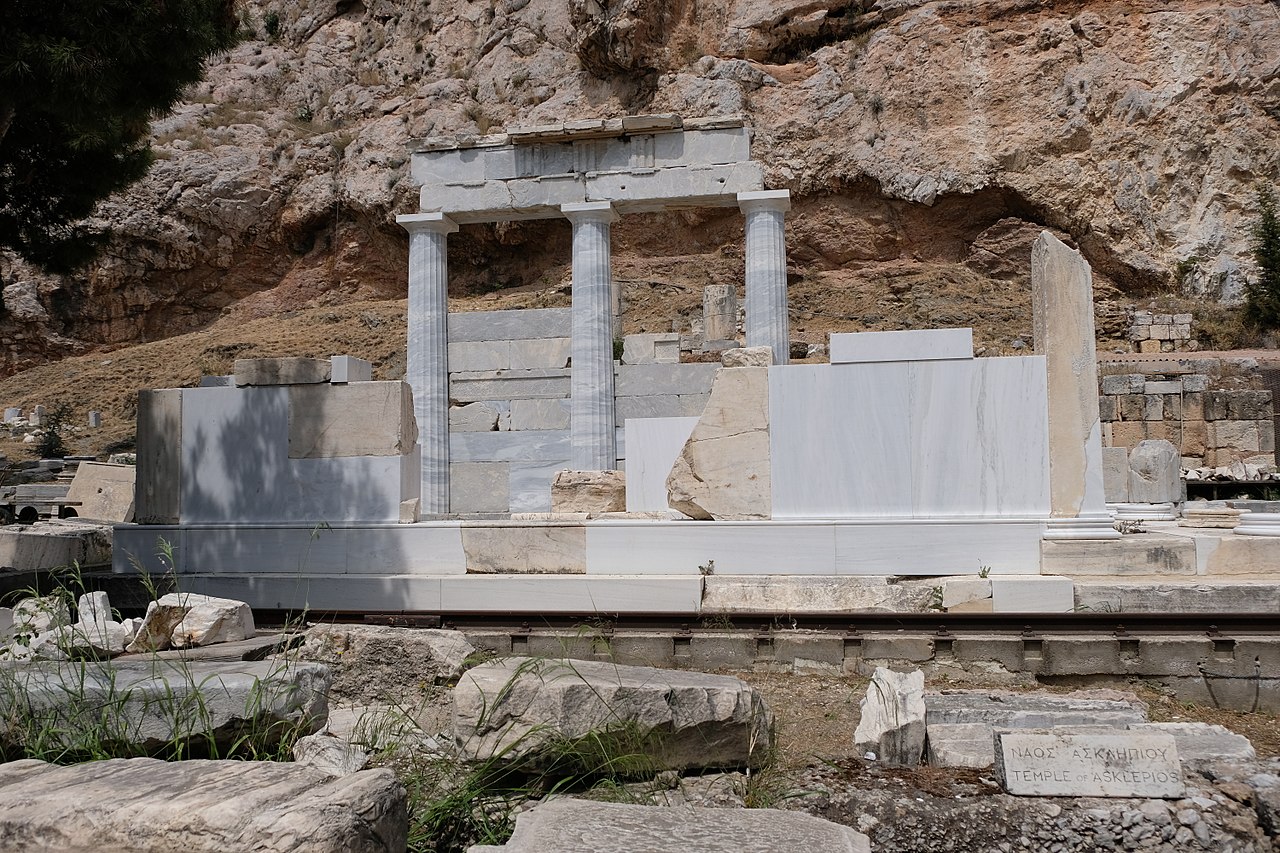
The interaction between the polytheistic beliefs of ancient Greece and the subsequent emergence of Christianity stands as a pivotal chapter in history. The shift from one religious framework to another was marked by considerable challenges, often involving intense clashes, executions, and the widespread destruction of temples.
The intricate and arduous nature of this transition has left a lasting imprint, manifesting in instances where churches were constructed atop ancient Greek temples. Alternatively, some of these temples underwent direct conversion into Christian places of worship.
Why were churches built on top of ancient Greek temples?
There is more than one reason why churches were often built on the same site as ancient Greek temples. Some scholars believe it was a way for Christians to show dominance over the former polytheistic religion.
In the late fourth century, Roman Emperor Theodosius issued an edict, as well as several subsequent laws, which led to the fall of polytheism. In complete contrast to what had occurred in the early history of Christianity, this led to polytheists being attacked by Christians. Many of them attacked and destroyed polytheistic religious sites.
The fact that they then built their own religious sites on top of them seems, to many scholars, to signify an act of dominance, showing Christianity’s victory over paganism.
Another reason for this trend
Despite this possibility, undoubtedly a key reason why the sites of temples often became repurposed as churches is because of the difficulty involved in getting a society to completely abandon its former way of life. We see this same principle at play in numerous other ways in traditional Christian beliefs and festivals.
For example, the date and celebration of Christmas ultimately comes from the Roman festival of Saturnalia. Many concepts that we now commonly associate with Christianity came from Greek philosophy. Even when people converted, they liked to maintain the same traditions and beliefs they already had as much as possible.
For this reason, many people who had converted to Christianity would inevitably have kept on going back to the same religious sites to worship. By no means was it easy to just disregard a site that had previously held religious significance throughout one’s life.
The Parthenon
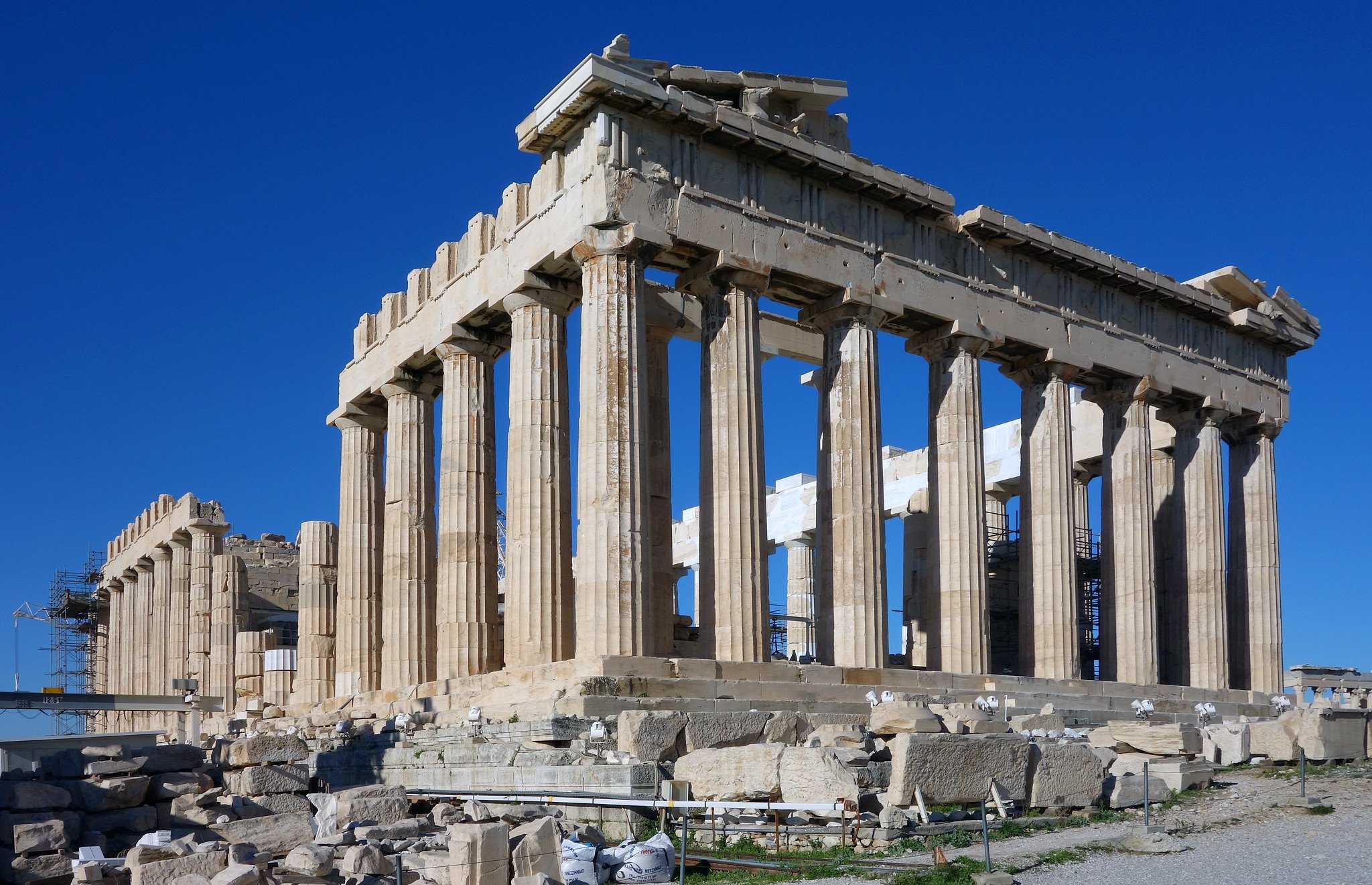
Perhaps the most famous example of all is the Parthenon. This was the massive Temple of Athena on the Acropolis of Athens. Built in the fifth century BCE, it was eventually converted into a church in the fifth century CE over a thousand years after its founding.
Some suggest it was finally closed as a temple in the time of Emperor Zeno in the 480s, but there is no definitive evidence of this.
The church became known as the Church of the Theotokos, a Greek word meaning “Mother of God.” The new occupants covered the walls with various Christian icons, removing much of the old imagery. In the thirteenth century, this church was turned into a cathedral. Eventually, two centuries later, the Ottoman Turks conquered this area and converted this building into an Islamic mosque.
After the liberation of the Greeks from the Ottomans, all the interventions that had been made on the Acropolis were removed
Holy Church of the Virgin Mary Evangelistria at Tinos (Panagia Tinou)
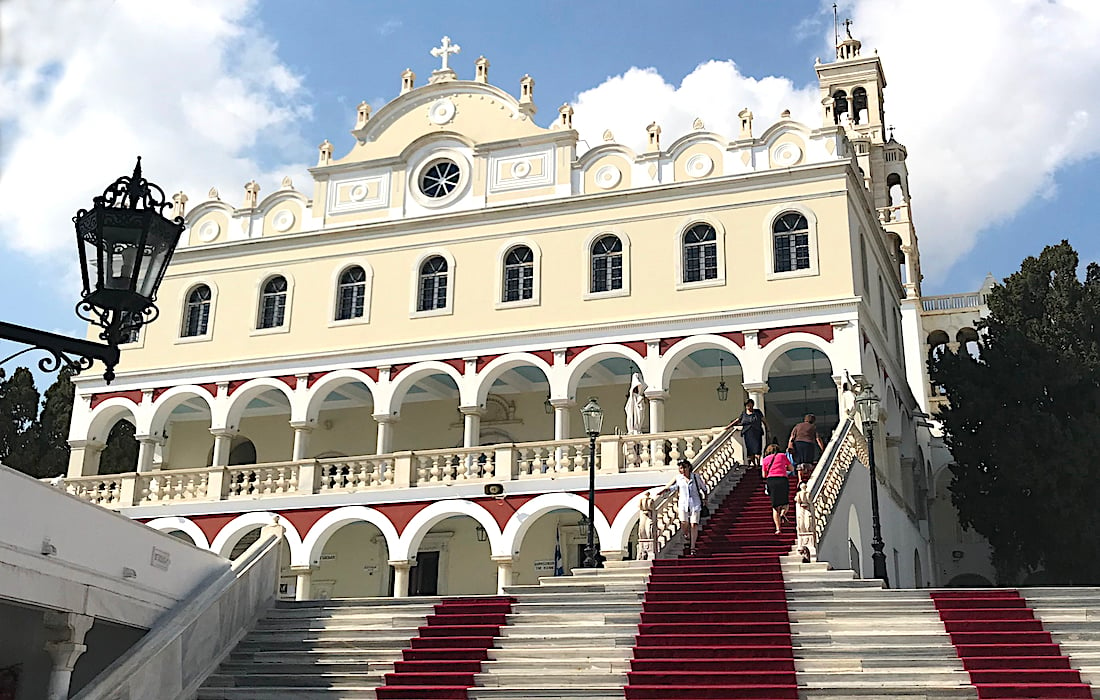
Millions have made the pilgrimage to Tinos to venerate the miraculous icon of the Virgin Mary, in the magnificent Holy Church of the Virgin Mary Evangelistria at Tinos island, Greece. Following contact with the icon as well as prayers and promises dedicated to the Virgin Mary, many who were severely ill recovered and have been healed.
Pilgrimages are made by the faithful, praying for their own miracles as they disembark the ship that brings them to the Cycladic island. Many crawl the length of the road on their knees in humility as they approach the church that houses the sacred icon.
Excavations during the 1800s revealed that beneath the church lies the ruins of the ancient Greek temple/theater of Dionysus.
In the pre-Christian era, Tinos held the same esteemed reputation it boasts today. Drawing visitors not only from across Greece but also from various corners of the Mediterranean, the allure extended to the famed Temple of Dionysus and the Temple of Poseidon and Amphitrite at Kionia, approximately four kilometers from the present-day Panagia of Tinos.
Ancient pilgrims, hailing from both distant lands and nearby regions, would invariably commence their journey at the revered site of Dionysus and of Poseidon.
In close proximity lay the ‘Sacred Spring of Amphitrite,’ where hopeful individuals, afflicted by ailments, sought miraculous healing through its waters. Remarkably, this spring endures to this day, revered as the miraculous spring of Holy Mary.
Temple of Athena, Syracuse
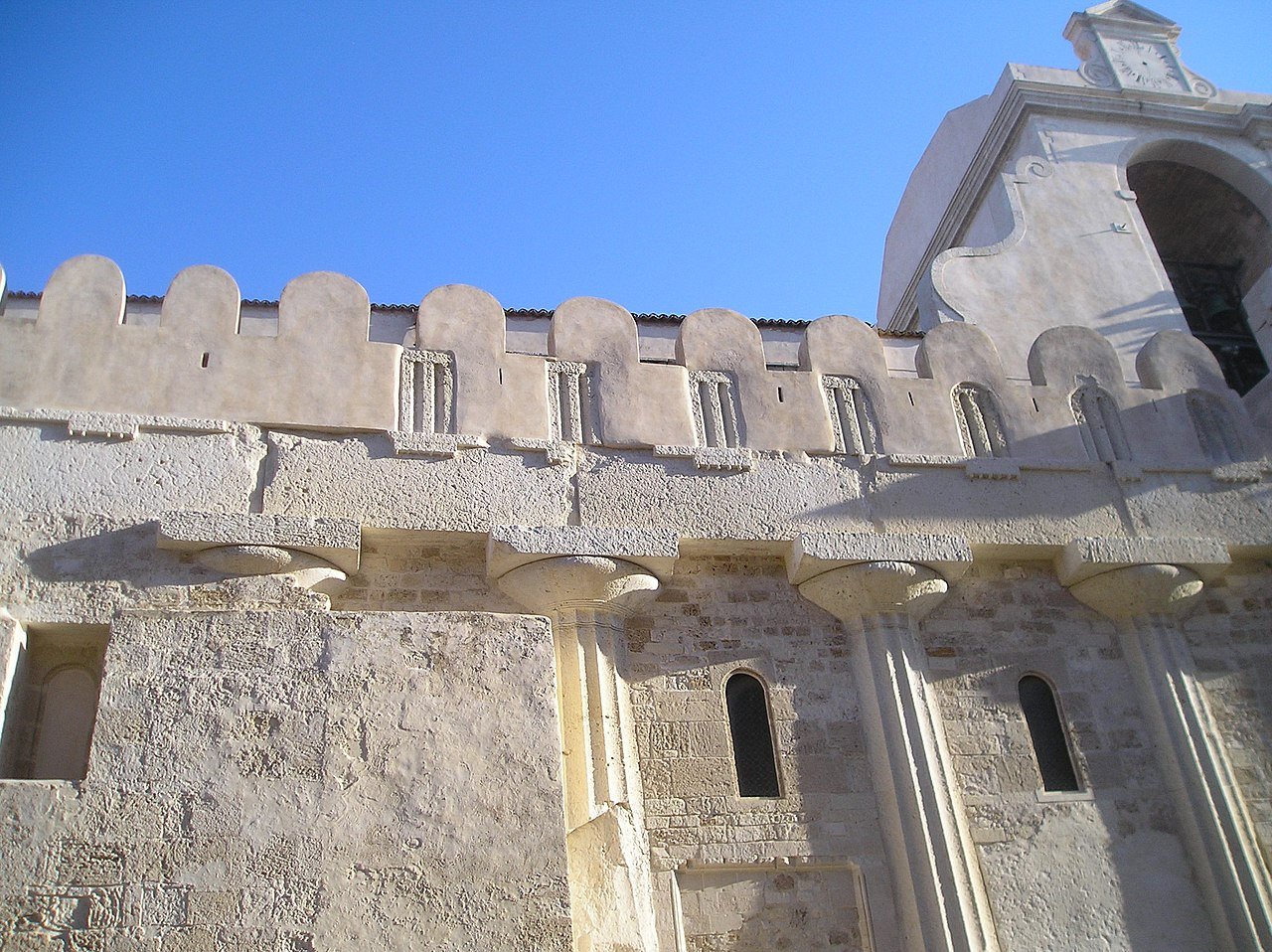
Another temple of Athena was in Syracuse, located in the southeast corner of Sicily. From about the seventh century BCE, this whole region became heavily populated by Greeks. In the sixth century BCE, the Greeks built a Temple of Athena there.
At the site of the ancient temple, Bishop Zosimo of Syracuse constructed a cathedral in the seventh century CE. This eventually became the cathedral that stands there today. It is now called the Cathedral of Syracuse.
As can be seen in the photo, the original Doric columns from the ancient temple are now part of the structure of the cathedral. Like the Parthenon, this building was converted into a mosque at one point. However, this occurred much earlier in the ninth century, and, just two centuries later, it was turned back into a Catholic church when Roger I, a Norman leader and nobleman, conquered Sicily.
Temple of Hephaestus, Athens

The Parthenon was not the only place in Athens with temples. Near the Agora of Athens in the heart of the city was the Doric Temple of Hephaestus. The Greeks constructed it around the same time as the Parthenon in the fifth century BCE.
Quite a while later in the seventh century CE, this temple was converted into a church. The newly established church was dedicated to Saint George. Unlike some other examples, this large temple basically maintained its original appearance despite being converted into a church.
Even today, when looking at the ruins, it is difficult to believe it was ever anything but an ancient Greek temple. In the nineteenth century, it was turned into a museum, and today it is a protected historical monument.
Asclepieion, Athens
Much like the Parthenon, this temple was built on the Acropolis. It was constructed around the same time as the Parthenon in the fifth century BCE. The temple was dedicated to Asclepius, the god of medicine, and Hygieia, a goddess of health. As such, it served as a kind of rudimentary hospital.
Near the start of the sixth century CE, this site was Christianized. The Christians destroyed the statues of Asclepius. A three-aisled basilica was built on the site of this former temple, with many aspects of the temple being incorporated into the new building. This was then divided into more than one building between the eleventh to thirteenth centuries, one of which was used as the church of a monastery. However, it appears that it fell into disuse long before the modern era.
Temple of Artemis and Monastery of Faneromeni, Lefkada
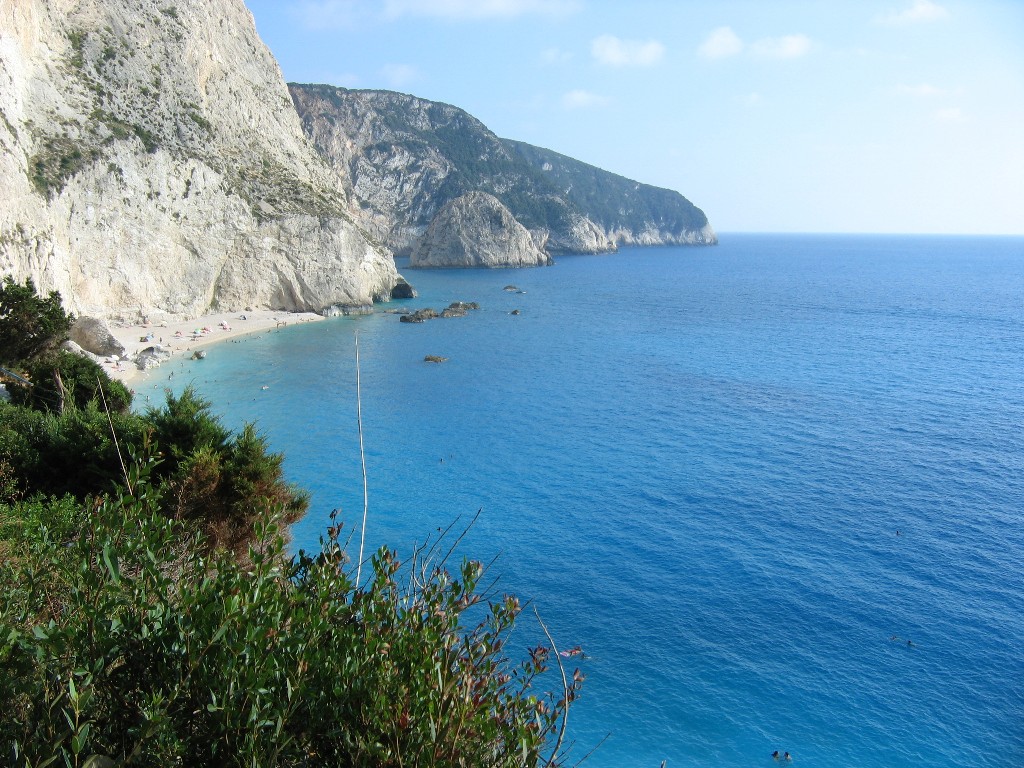
The Temple of Artemis on Lefkada is quite obscure. It appears that only one ancient source mentions it. The poet Callimachus from the third century BCE recounted a story about the temple. It also appears to be mentioned by Geoffrey of Monmouth, a medieval British monk who wrote in the twelfth century. Writing in Latin, his book, known as Historia Regum Britanniae (History of the Kings of Britain), referred to a Temple of Diana on Lefkada, the goddess Diana being the Roman version of Artemis.
There is no definitive evidence regarding the exact original location of this ancient Greek temple of Artemis, but many sources claim it lies beneath the present-day Monastery of Faneromeni.
See all the latest news from Greece and the world at Greekreporter.com. Contact our newsroom to report an update or send your story, photos and videos. Follow GR on Google News and subscribe here to our daily email!



